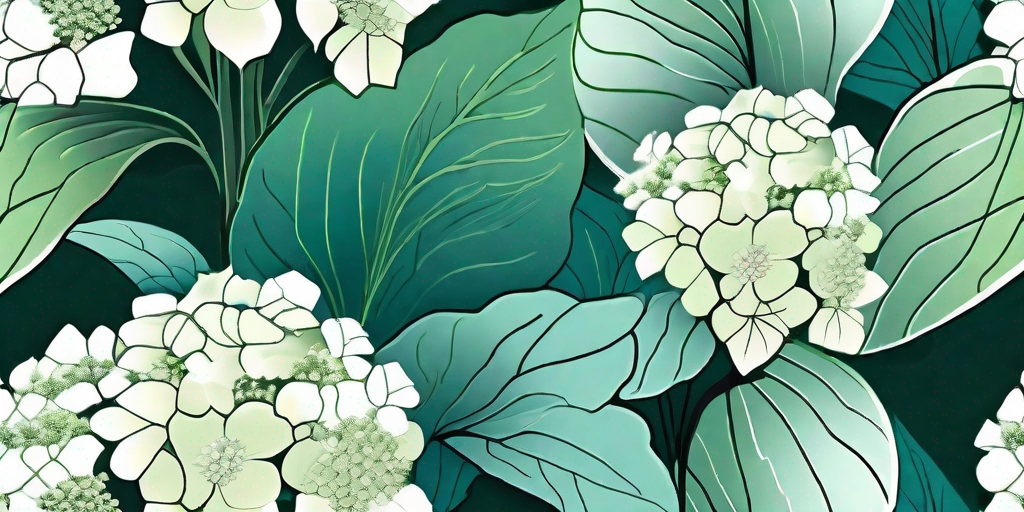
If you're looking for a way to add a touch of elegance and charm to your garden, look no further than the white hydrangea plant. This blooming beauty is not just a pretty face, it's a powerhouse of flower power that can transform your garden into a stunning oasis. But don't just take our word for it, let's dive into the world of white hydrangeas and see what makes them so special.
The Magic of White Hydrangeas
White hydrangeas are like the swans of the plant world - graceful, elegant and simply breathtaking. They are known for their large, round flower heads that are packed with tiny, star-shaped flowers. But it's not just their beauty that makes them a gardener's favorite. These plants are hardy, easy to care for and can thrive in a variety of conditions.
And let's not forget their versatility. Whether you want to create a stunning border, a vibrant hedge, or simply add a splash of color to a dull corner, white hydrangeas are up to the task. They can even be grown in containers, making them a great choice for those with limited space.
The Symbolism of White Hydrangeas
Did you know that flowers have meanings? It's true! In the language of flowers, white hydrangeas symbolize purity, grace, and abundance. So, when you plant a white hydrangea in your garden, you're not just adding a beautiful plant, you're making a statement.
And if you're into Feng Shui, you'll be pleased to know that white hydrangeas are considered good luck and are often used to bring positive energy into a space. So, if you're looking to boost the chi in your garden, you know what to do.
How to Grow White Hydrangeas
Now that we've piqued your interest, let's get down to the nitty-gritty - how to grow white hydrangeas. Don't worry, it's not as complicated as it sounds. In fact, with a little bit of knowledge and a dash of patience, you'll be a hydrangea-growing pro in no time.
First things first, you'll need to choose the right spot for your hydrangea. These plants prefer a spot with morning sun and afternoon shade. They also like well-drained soil that's rich in organic matter. So, before you plant, make sure to enrich your soil with compost or a slow-release fertilizer.
Planting Your Hydrangea
Once you've found the perfect spot, it's time to plant. Dig a hole that's twice as wide and as deep as the root ball of your hydrangea. Place the plant in the hole, making sure that the top of the root ball is level with the soil surface. Backfill the hole, firm the soil around the plant and water thoroughly.
And voila! You've just planted your first white hydrangea. Now all you have to do is sit back, relax and watch it grow.
Caring for Your Hydrangea
While white hydrangeas are relatively low-maintenance, they do need some care to thrive. Water them regularly, especially during dry spells. They also benefit from a layer of mulch to help retain moisture and keep the roots cool.
Pruning is also important. For most white hydrangeas, you'll want to prune in late winter or early spring. However, be sure to check the specific pruning recommendations for your variety, as some hydrangeas bloom on old wood and should be pruned after flowering.
White Hydrangeas in Your Garden Design
Now that you know how to grow white hydrangeas, let's talk about how to incorporate them into your garden design. With their large, showy flower heads, these plants can make a big impact in your garden.
One popular way to use white hydrangeas is as a border plant. Their lush foliage and stunning blooms create a beautiful backdrop for other plants. They also make a stunning hedge or privacy screen. And if you're looking to create a focal point in your garden, a group of white hydrangeas is sure to turn heads.
Companion Plants for White Hydrangeas
While white hydrangeas are stunning on their own, they can also play well with others. Some great companion plants for white hydrangeas include hostas, ferns, and astilbes. These plants all thrive in similar conditions and can help create a lush, layered look in your garden.
For a pop of color, consider pairing your white hydrangeas with plants that have vibrant foliage or flowers. Some good choices include Japanese forest grass, coral bells, and daylilies.
FAQs About White Hydrangeas
- Do white hydrangeas change color?
No, unlike some other types of hydrangeas, white hydrangeas do not change color based on the pH of the soil.
- How big do white hydrangeas get?
Depending on the variety, white hydrangeas can grow anywhere from 3 to 10 feet tall and wide.
- Are white hydrangeas deer resistant?
While no plant is completely deer-proof, white hydrangeas are not a favorite of deer and are often left alone.
- How often should I water my white hydrangea?
White hydrangeas like consistently moist soil, but not waterlogged. A good rule of thumb is to water them when the top inch of soil feels dry to the touch.
So there you have it, the lowdown on the white hydrangea. With its stunning blooms, easy care, and versatile design possibilities, it's no wonder this plant is a garden favorite. So why not give it a try? Your garden will thank you.















